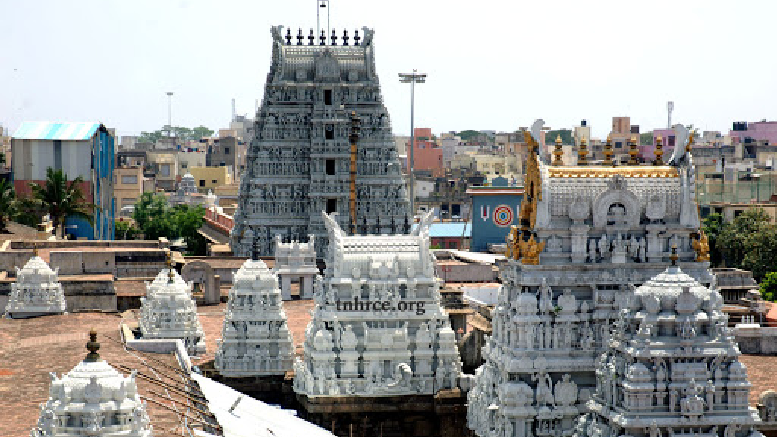Introduction
Nestled in the bustling heart of Chennai, Sri Parthasarathy Temple stands as a beacon of ancient spirituality and architectural grandeur. Dating back to the 6th century, this revered temple is not just a place of worship, but a living testament to the timeless tales of Hindu mythology and the enduring legacy of Lord Krishna.
As we step into this sacred precinct, we are transported back to an era where divine stories were carved in stone and devotion resonated through the corridors of time. This temple, dedicated to Lord Krishna as the charioteer of Arjuna, is not merely a structure made of bricks and mortar, but a portal to a spiritual realm that has nurtured the faith and culture of generations.
Join us on a transcendental journey as we explore Sri Parthasarathy Temple, a jewel in the crown of Chennai’s rich cultural heritage, and unravel the mysteries and marvels that lie within its ancient walls.
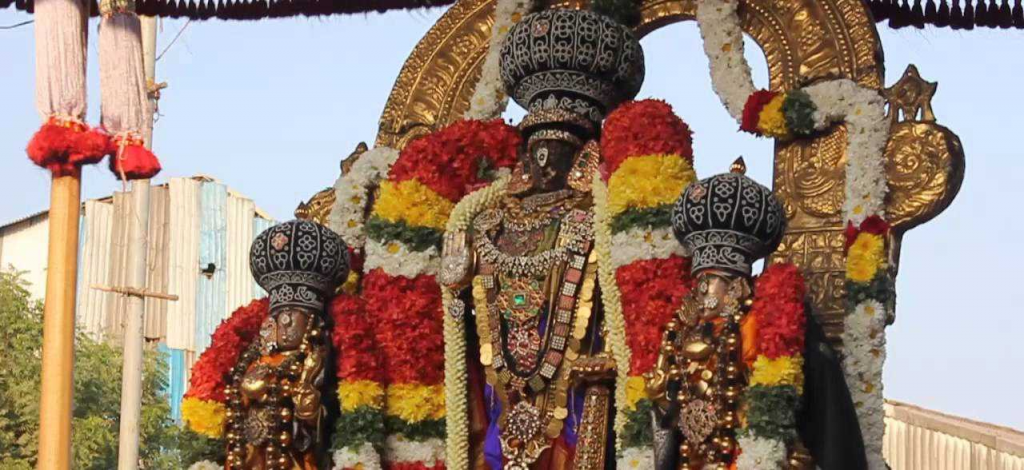
The Temple’s Revered Place in Ancient Tamil Literature and Vishnu’s Sacred Abodes
Sri Parthasarathy Temple stands majestically, immortalized in the sacred verses of the Divya Prabandha, an illustrious collection of early medieval Tamil literature penned by the revered Alvar saints between the 6th and 9th centuries CE.
This hallowed sanctuary is not just a mere structure; it is a celebrated jewel among the 108 Divya Desams, the most venerated abodes dedicated to Lord Vishnu. Each stone and carving of the temple whispers tales of devotion, echoing the celestial chants and spiritual wisdom of these ancient poets, elevating the temple to a realm beyond mere architectural beauty. It is a testament to the enduring legacy of faith, a spiritual haven where the divine and the earthly realms converge.

Divine Charioteer and Architectural Legacy: The Pallava Dynasty’s Creation of Sri Parthasarathy Temple
The name ‘Parthasarathy’ resonates with a profound historical and spiritual significance, embodying Lord Krishna’s pivotal role as the charioteer to the valiant warrior Arjuna in the epic Mahabharata. This revered title, ‘Parthasarathy’, is not merely a name, but a symbol of divine guidance and wisdom, echoing the timeless teachings of the Bhagavad Gita.
Cradled in the annals of history, the majestic Sri Parthasarathy Temple was envisioned and brought to life by the visionary Pallava dynasty. Its foundations were laid in the 6th century by the illustrious King Narasimhavarman I.
This architectural marvel stands as a testament to the Pallavas’ profound devotion and their extraordinary patronage of art and architecture, bridging the celestial and the earthly, and encapsulating a sacred legacy that has withstood the test of time.”

Sanctuary of Divinity: A Tapestry of Vishnu’s Forms and Venerable Deities
Within its ancient walls, Sri Parthasarathy Temple houses a remarkable assembly of deities, showcasing five distinct and revered forms of Lord Vishnu: the meditative Yoga Narasimha, the heroic Rama, the compassionate Gajendra Varadaraja, the serene Ranganatha, and the wise Krishna as Parthasarathy.
As one of Chennai’s oldest edifices, this temple is not just a structure but a spiritual mosaic. It encompasses sanctuaries dedicated to Vedavalli Thayar, Ranganatha, Rama, Gajendra Varadar, Narasimha, Andal, Hanuman, and the Alvars. Furthermore, it venerates the sagacious Ramanuja, Swami Manavala Mamunigal, and Vedanthachariar, creating a tapestry of devotion that transcends time.

Architectural Grandeur of Sri Parthasarathy Temple: A Testament to South Indian Artistry
Sri Parthasarathy Temple in Chennai is an architectural marvel, epitomizing the grandeur of South Indian temple design. Its Gopurams (towering gateways) and Mandapas (pillar-filled halls) are adorned with intricate carvings that narrate tales from ancient scriptures, bringing mythological stories to life in stone. Each carving is a masterpiece, showcasing the exceptional skill and artistic vision of the craftsmen.
These structures are not just pillars and towers; they are a canvas that captures the essence of spiritual and cultural heritage. The temple’s architecture is a harmonious blend of divine inspiration and human ingenuity, creating an atmosphere that is both awe-inspiring and deeply serene.
Standing amidst these architectural wonders, one can feel a profound connection to the past, as if the very stones speak of centuries-old devotion and artistry. The use of vibrant colors and the strategic placement of statues and reliefs further enhance the temple’s aesthetic appeal, making it a visual feast for the eyes.
Sri Parthasarathy Temple is not only a place of worship but also a testament to the enduring legacy of South Indian architecture and art. Its enduring beauty and intricate details continue to draw devotees and art enthusiasts alike, making it a cherished landmark in the rich tapestry of Indian cultural heritage.

Legend of Divine Intervention: The Story Behind Sri Parthasarathy Temple
The legend of Sri Parthasarathy Temple is steeped in divine mystique. It is said that the temple was built at the behest of Lord Vishnu himself. According to the lore, the sage Athreya, a devout worshipper of Lord Vishnu, was instructed in a dream by the deity to find his idol in the dense Tulasi forest.
Guided by divine intervention, Athreya discovered the idol, leading to the creation of this sacred temple. This story symbolizes the temple not just as a man-made structure, but as a divine manifestation, bringing the celestial down to the earthly realm.
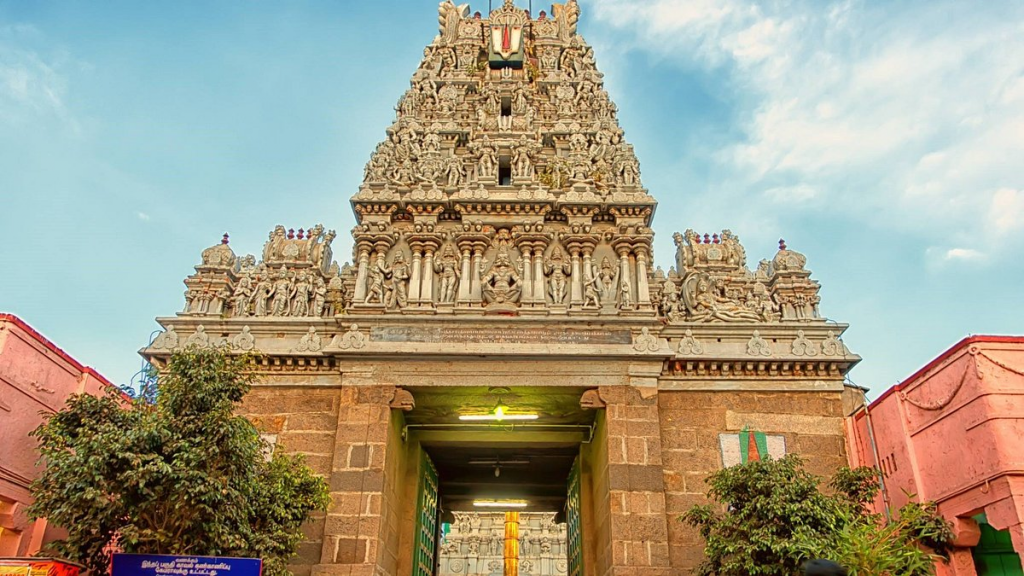

The place is called Allikeni, meaning a pond of lily as it is believed that historically the place was full of lily ponds. The place is the only place where the presiding deity is sported with a mustache.

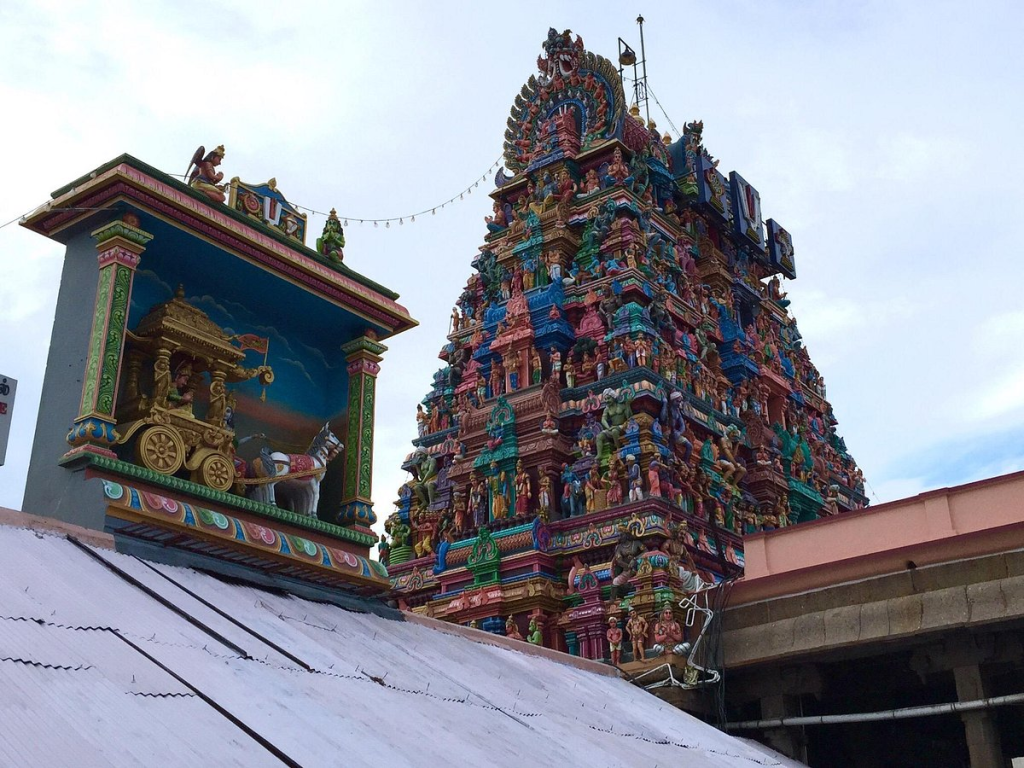
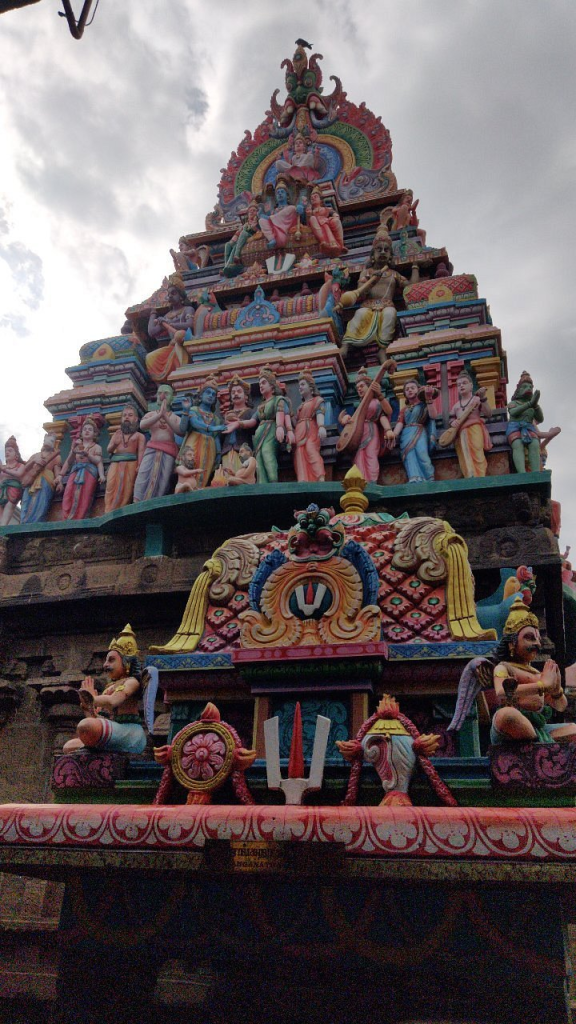
Tracing the Roots: The Historical Journey of Sri Parthasarathy Temple
Sri Parthasarathy Temple, nestled in Chennai, is a historical marvel that dates back to the 6th century. Constructed under the patronage of the Pallavas, renowned for their contribution to South Indian temple architecture, the temple has stood the test of time, witnessing the ebb and flow of dynasties and cultures.
Originally built by King Narasimhavarman I, the temple has undergone several renovations and additions by later rulers, including the Cholas and the Vijayanagara Empire. Its name, ‘Parthasarathy’, meaning the charioteer of Arjuna, is derived from its dedication to Lord Krishna in this role during the epic Mahabharata.
Over the centuries, the temple has not only been a spiritual haven but also a center for the preservation of religious and cultural traditions, encapsulating a rich tapestry of India’s spiritual and architectural heritage.
The temple is maintained and administered by the Hindu Religious and Charitable Endowments Department of the Government of Tamil Nadu.
Darshan at Sri Parthasarathy Temple
At Sri Parthasarathy Temple in Triplicane, Chennai, the darshan experience is profoundly spiritual. Devotees gather to witness and seek blessings from the presiding deity, Lord Parthasarathy, an incarnation of Lord Krishna.
The temple offers different forms of darshan, including Vishwaroopa, Sahasranama, and Thirumanjanam, allowing devotees to connect with the divine at various times of the day. The serene and reverent atmosphere during darshan provides a moment of peace and spiritual connection amidst the bustling city life.
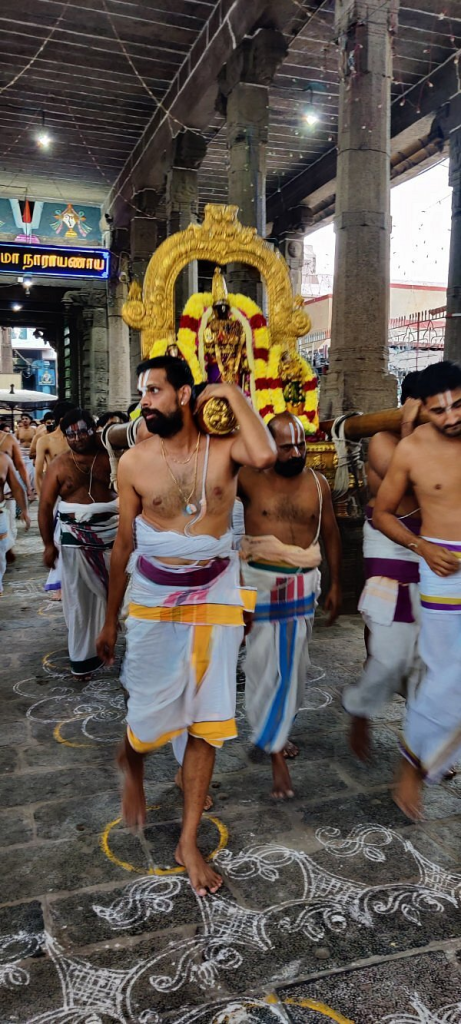
Sevas at Sri Parthasarathy Temple
Sevas at Sri Parthasarathy Temple are diverse and deeply rooted in tradition. Devotees can partake in various sevas like Archana, Abhishekam, and Deepa Aradhana, each offering a unique way to pay homage to the deity. These rituals are performed with utmost devotion and precision, involving hymns, offerings, and the lighting of lamps, creating a divine ambiance that engulfs the temple premises.

Utsavams at Sri Parthasarathy Temple
Utsavams at Sri Parthasarathy Temple are grand and vibrant celebrations that attract thousands of devotees. Notable among these is the Brahmotsavam, a spectacular festival marked by processions of the deity on different vahanas (vehicles) each day. The Vaikunta Ekadasi Utsavam is another significant event, where the opening of the Vaikunta Dwaram, or the gateway to heaven, is a highlight, symbolizing the journey towards moksha or liberation.
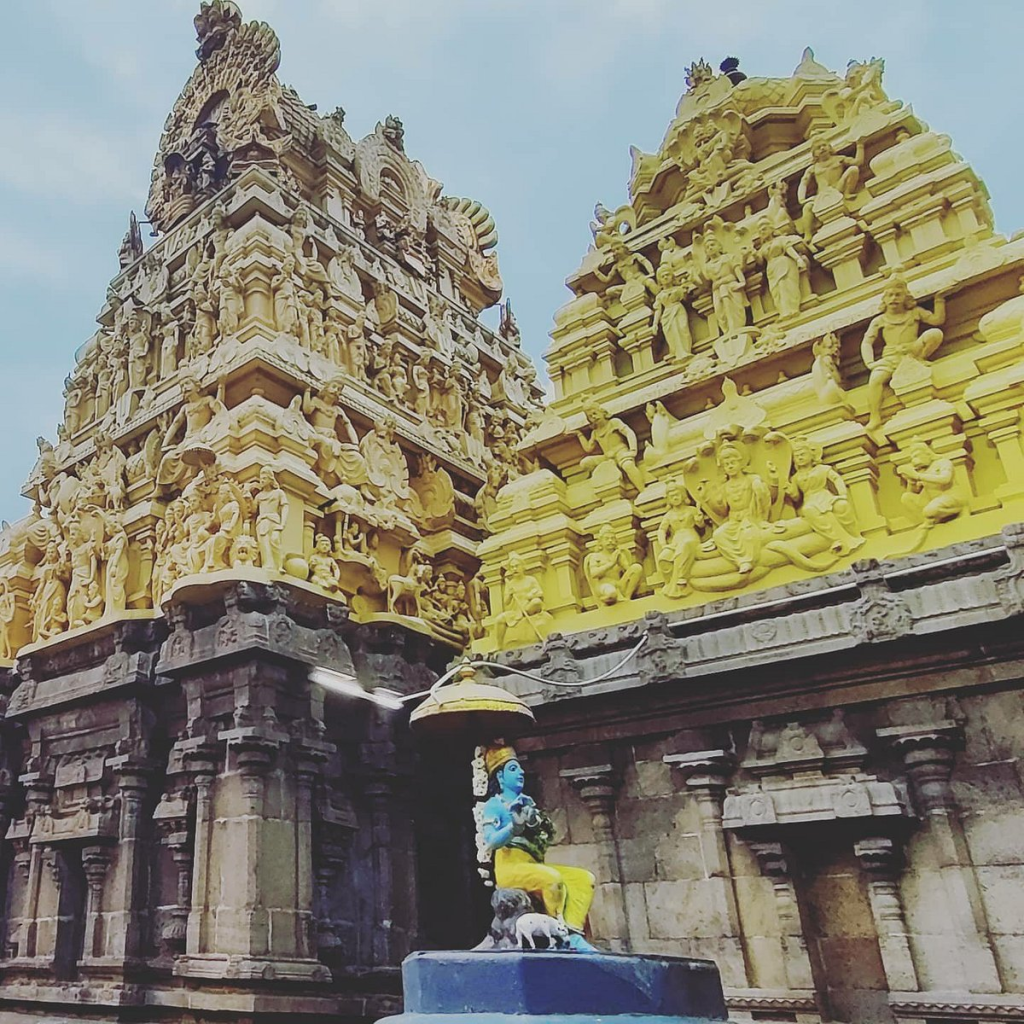
Festivals at Sri Parthasarathy Temple
Sri Parthasarathy Temple is a hub of cultural and spiritual festivity. Major Hindu festivals like Janmashtami, celebrating the birth of Lord Krishna, and Rama Navami, commemorating the birth of Lord Rama, are observed with great fervor. During these festivals, the temple is adorned with lights and decorations, and special rituals and cultural programs are conducted, drawing devotees from across the region to partake in the celebrations, fostering a sense of community and shared devotion.

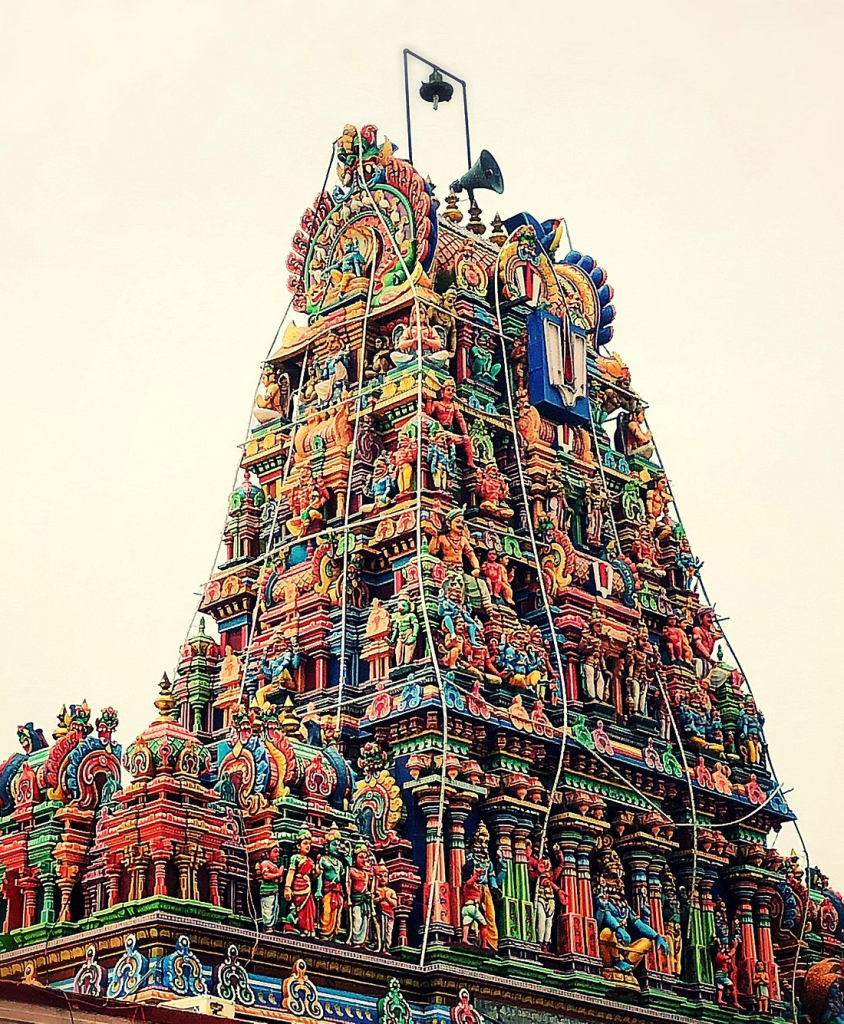
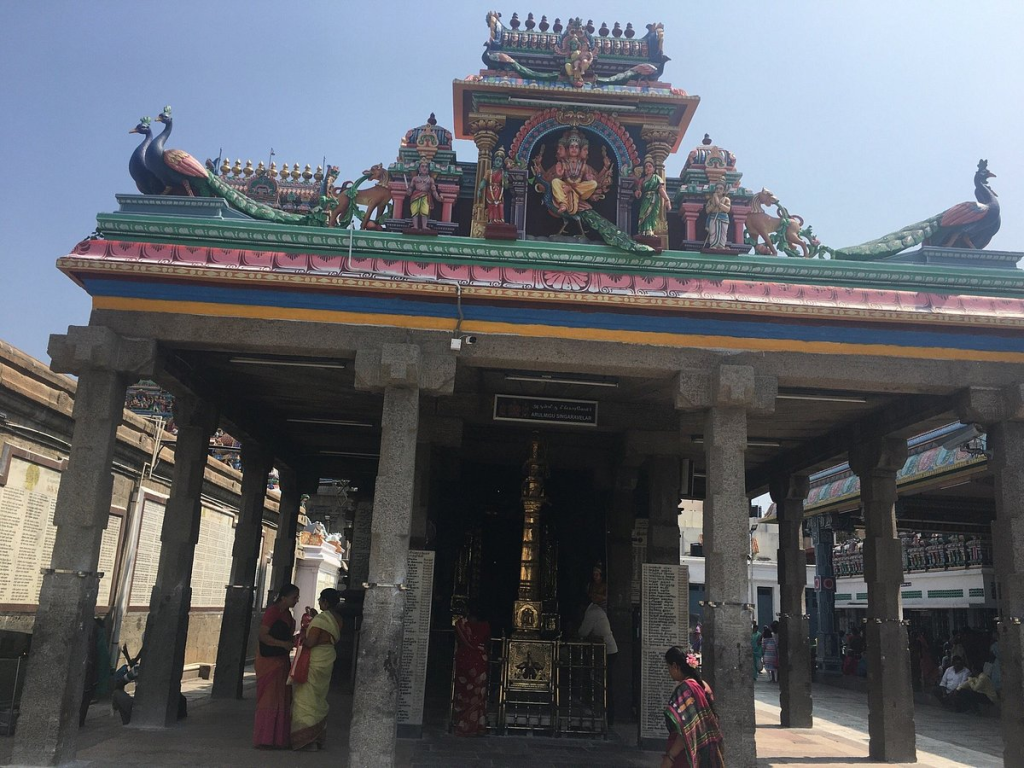

Sri Parthasarathy Temple is managed by the Hindu Religious and Endowment Board, which is a part of the Tamil Nadu government. The temple practices and rituals are based on the Thenkalai sect of the Vaishnavite tradition and follow the rules and guidelines of the Vaikanasa Aagama.

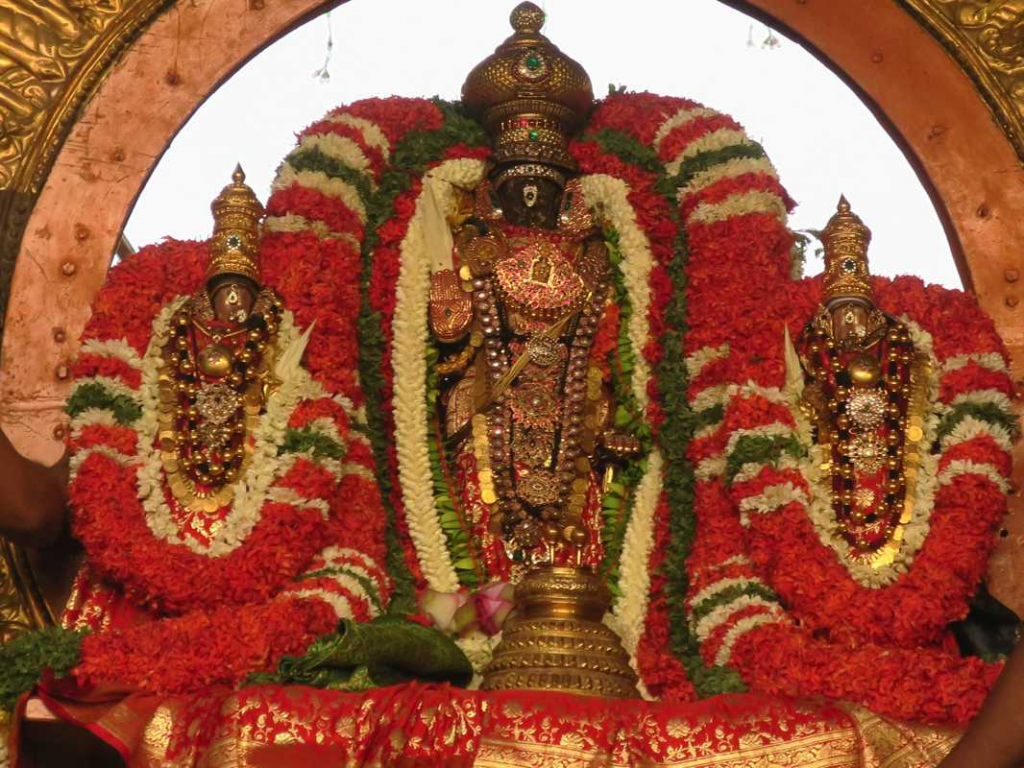
Festivals and Utsavams of Sri Parthasarathy Temple in More Details: Celebrations Through the Tamil Calendar Year
Sri Parthasarathy Temple in Chennai is renowned for its vibrant festivals and utsavams, each marking significant events in the Tamil Calendar year. These festivals not only reflect the rich cultural heritage of the region but also bring to life the profound spiritual ethos of the temple.
- Vaikunta Ekadasi (Margazhi – December/January)
- Vaikunta Ekadasi is one of the most auspicious days in the Tamil Calendar, celebrated with immense devotion. The opening of the Vaikunta Dwaram (gateway to heaven) is a major highlight, symbolizing the path to liberation. Devotees throng the temple for a special darshan of Lord Parthasarathy, and the entire temple resonates with religious fervor and hymns.
- Ratha Sapthami (Thai – January/February)
- This festival is dedicated to the Sun God and is marked by a grand procession of Lord Parthasarathy in a chariot around the temple. It symbolizes the Sun’s movement, considered vital for life on Earth. The temple is adorned beautifully, and the ambiance is filled with devotional music and prayers.
- Panguni Brahmotsavam (Panguni – March/April)
- The Panguni Brahmotsavam is a ten-day festival, celebrated with great pomp and splendor. The festival includes processions of the deity on various vahanas, cultural events, and religious discourses. The Garuda Sevai, where the deity is taken out on a procession on the Garuda Vahana, is a significant event, drawing thousands of devotees.
- Sri Rama Navami (Panguni – March/April)
- Celebrating the birth of Lord Rama, Sri Rama Navami sees special rituals and readings of the Ramayana. Devotees gather to offer prayers, and the temple is decorated to mark the occasion, creating a serene and devout atmosphere.
- Vaikasi Garuda Sevai (Vaikasi – May/June)
- The Vaikasi Garuda Sevai marks the procession of Lord Parthasarathy on the Garuda Vahana. This event is particularly significant as it symbolizes the victory of good over evil, and the temple is thronged by devotees witnessing this divine spectacle.
- Aani Brahmmotsavam (Aani – June/July)
- Aani Brahmmotsavam is another major festival, celebrated over ten days with various religious ceremonies and cultural programs. Each day of the festival has its unique significance, with special pujas and processions.
- Aadi Pooram (Aadi – July/August)
- Aadi Pooram is dedicated to Goddess Andal, one of the 12 Alvars. The festival celebrates her earthly appearance and is marked by special rituals, offerings, and the recitation of her works.
- Sri Jayanthi (Aavani – August/September)
- Also known as Janmashtami, Sri Jayanthi celebrates the birth of Lord Krishna. The temple is beautifully decorated, and the festivities include reading of the Bhagavad Gita, devotional singing, and distribution of prasadam.
- Navaratri (Purattasi – September/October)
- Navaratri is celebrated over nine nights, dedicated to the Mother Goddess. The temple hosts various cultural events, including music and dance performances, drawing a diverse crowd of devotees and art enthusiasts.
Each of these festivals is not just a religious observance but a vibrant tapestry of faith, culture, and community spirit that brings together people from all walks of life. Sri Parthasarathy Temple serves as a focal point for these celebrations, upholding the traditions and spiritual ethos of the region.
Conclusion
In conclusion, Sri Parthasarathy Temple in Chennai stands as a resplendent symbol of not just religious devotion but also of cultural continuity and architectural magnificence. Through its ancient walls, ornate sculptures, and vibrant festivals, it tells a story of faith that has been nurtured and cherished over centuries.
As one of Chennai’s most revered and historic temples, it beckons not just devotees but also history enthusiasts and cultural explorers, offering a glimpse into the profound spiritual heritage and artistic grandeur of India.
The temple, with its myriad deities and celebrations, remains a living testament to the timeless teachings of the Mahabharata and the enduring legacy of Lord Krishna. As a cornerstone of spiritual life in Chennai, the Sri Parthasarathy Temple continues to inspire and unify people, transcending religious boundaries and echoing the timeless mantra of unity, devotion, and cultural richness.
